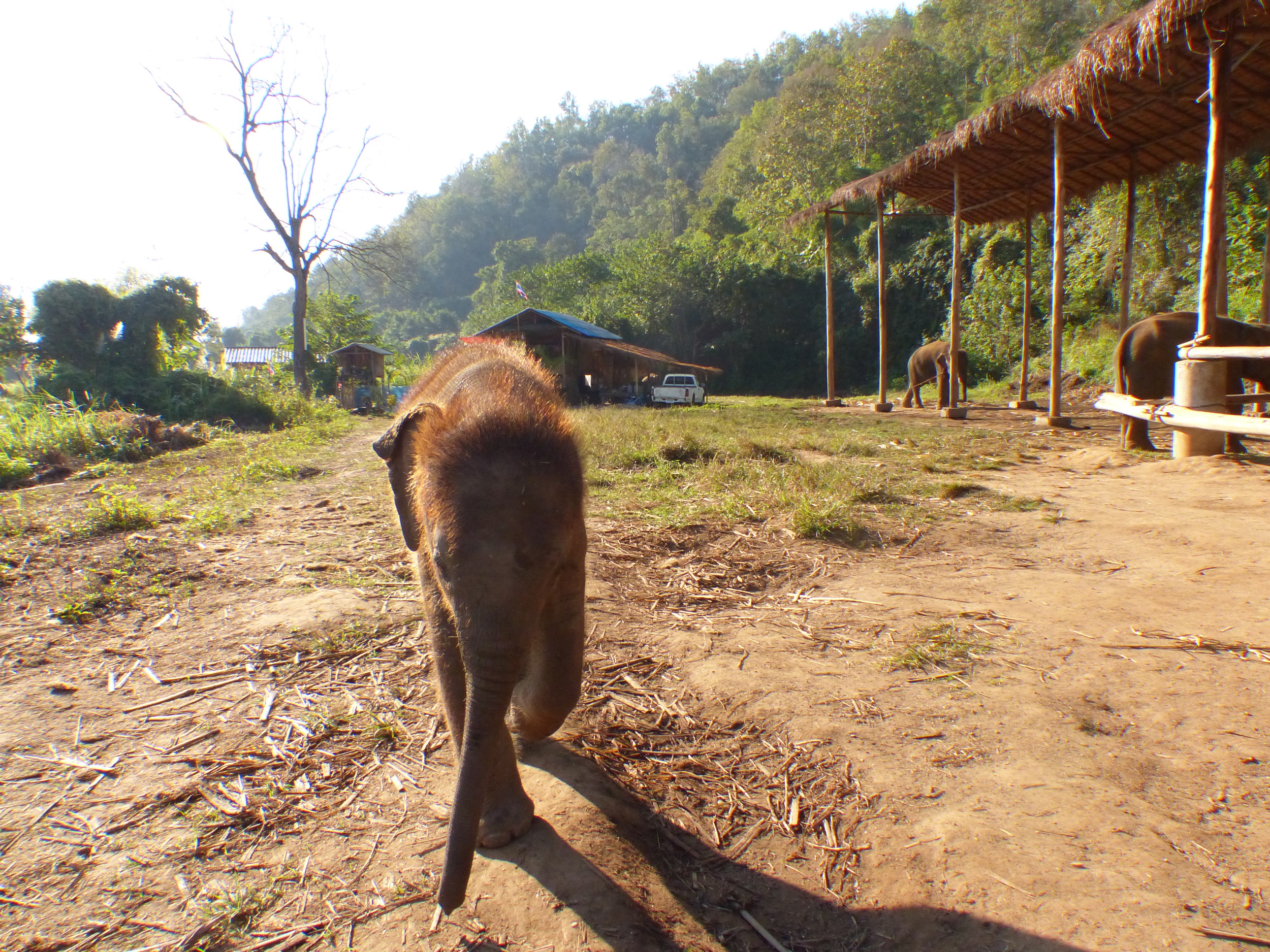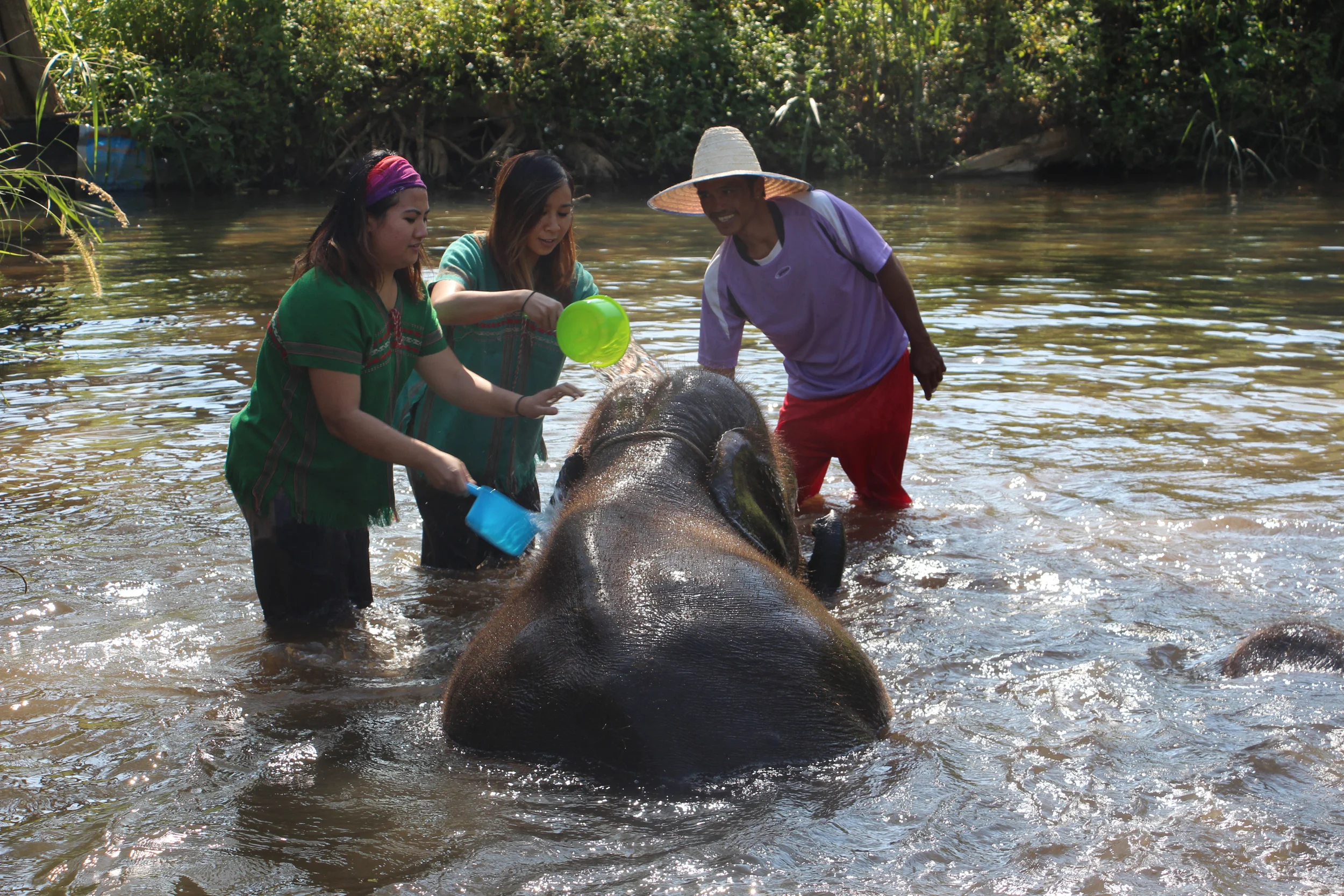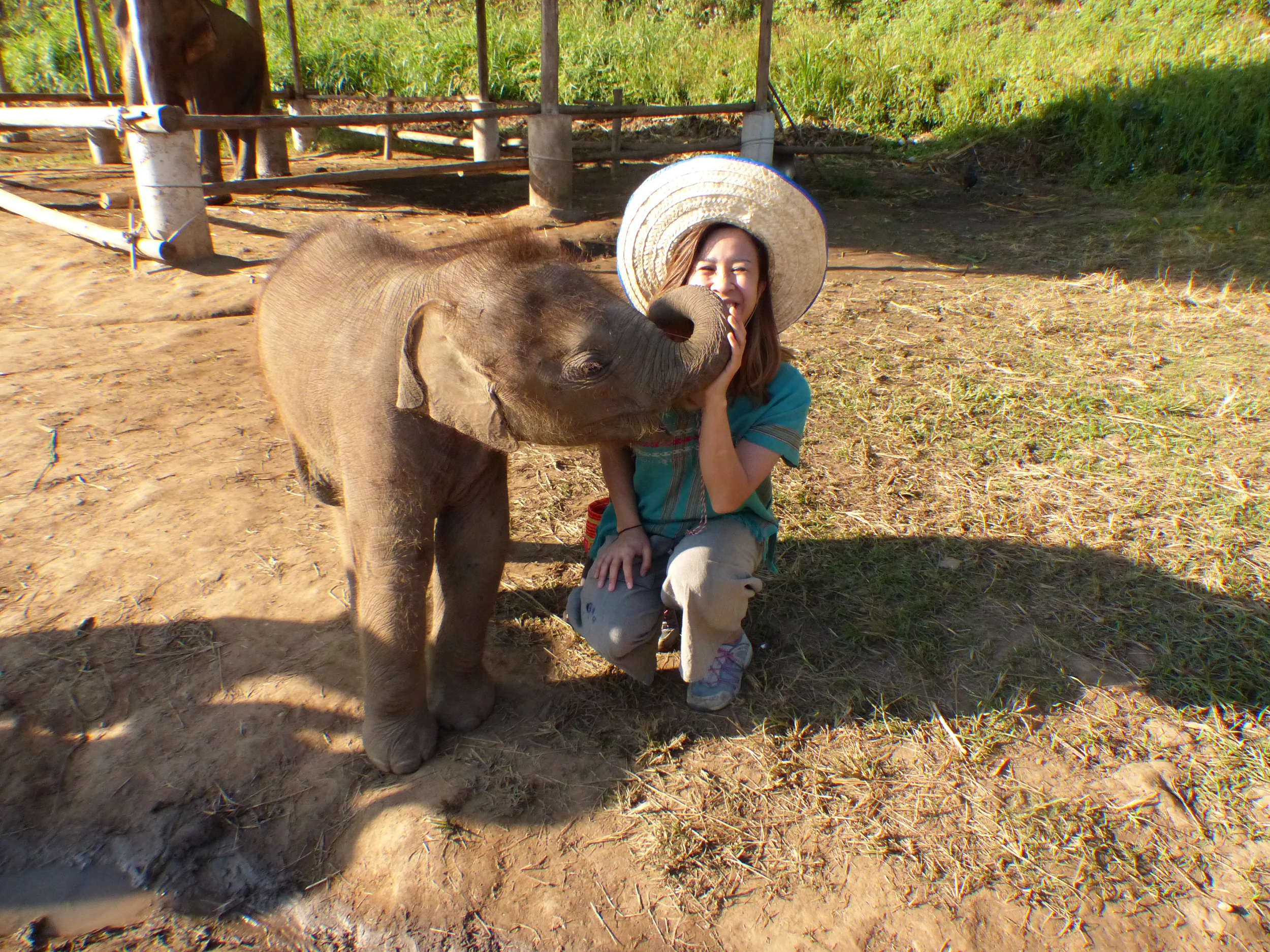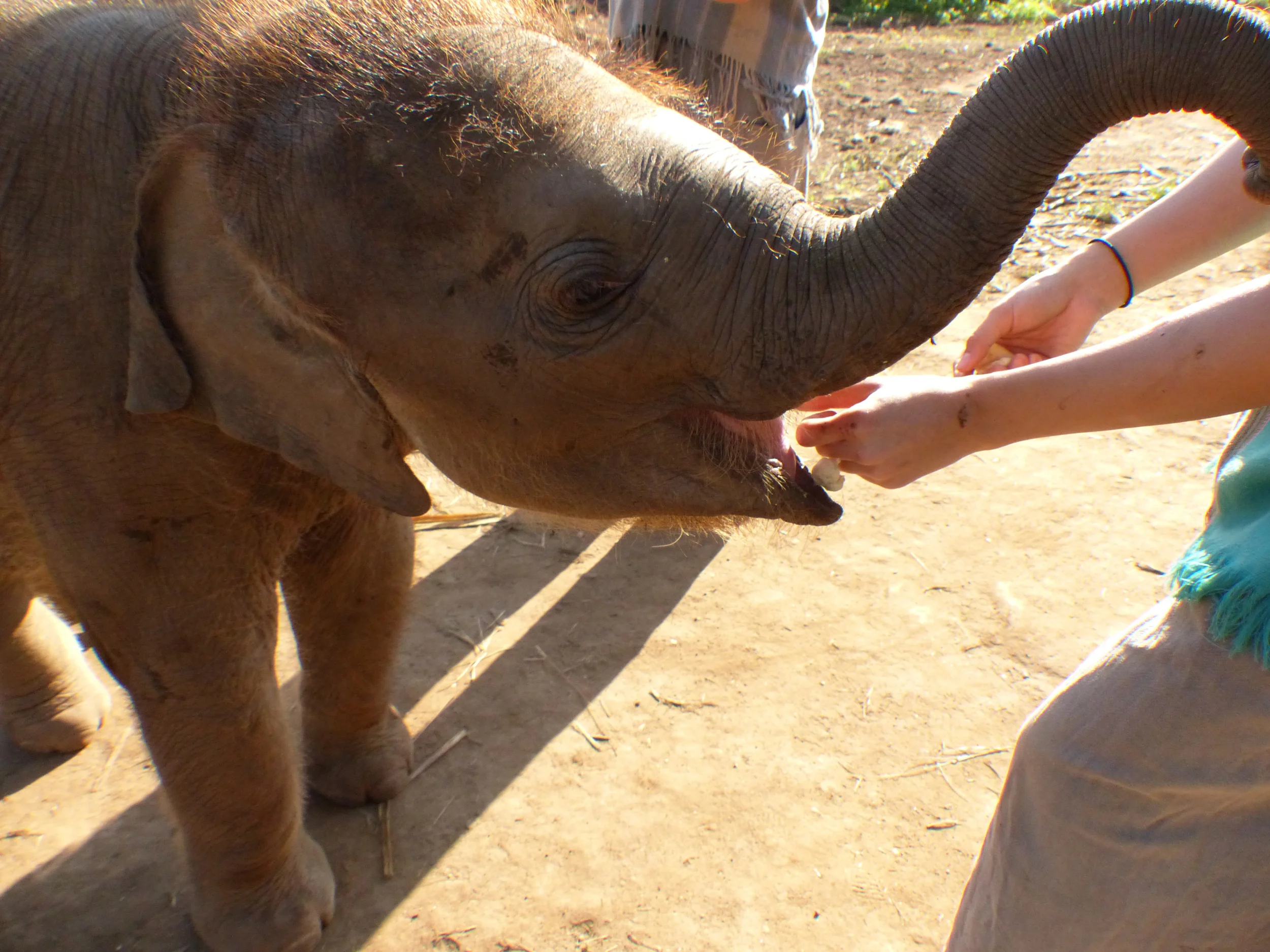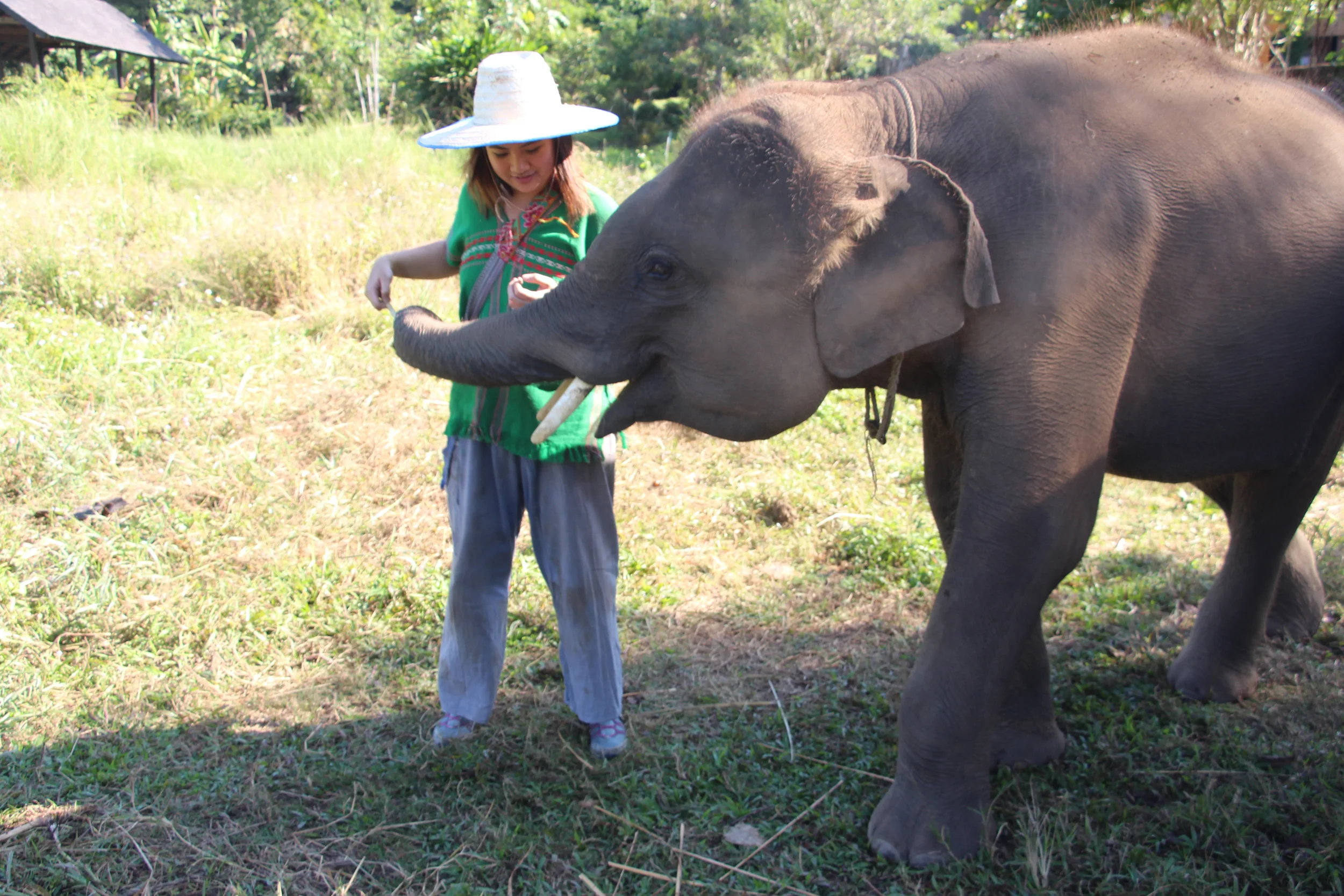Please do your research and find an elephant camp that is ethical for a meaningful volunteer contribution. Elephants should not be ridden with a saddle.
Ran-Tong is one of the many elephant rescue camps located north of the city centre. Established in 2009, it's one of the newer camps that offers bareback riding, no riding, rehabilitation and elephant spa programs.
We opted for the no riding program where you spend your time with baby and younger elephants. In this program, you can play and wrestle, walk, prepare snacks (chopping sugar cane) and bathe the elephants.
Our Experience
When we first arrived at Ran-Tong, we received a change of clothing, a hat and a satchel with a water bottle. We were then taken down to where the elephants were kept. From the first glance, you could see two younger elephants tied to a pole and the mama elephant in her pen.
Baby Ran-Tong was extremely friendly and ran up to greet us. As the first baby elephant born, she was named Ran-Tong after the centre. At four months old, she was already 110 kilograms! You can definitely feel her weight when she wrestles with you or playfully sits on you.
We spent some time getting to know baby Ran-Tong and learning more about the history of the centre. Our guide was quite knowledgable on elephants because he spent the last 18 years working with them.
We were then put to work and taught how to cut sugar cane as a treat for the elephants. Be careful as the knives are pretty sharp. Sugar cane to elephants is like candy to us. Since it doesn't come naturally in their habitat, they should only eat it in moderation.
After stuffing our satchel with these sweet treats, we were ready to walk them. The elephants knew what was going on and were a little too excited to walk with us. With their keen sense of smell, they would try to snatch the goodies from our bag.
The short walk eventually led to a pond where you bathe the elephants. Like us, elephants don't like cold water. So, it was really hard to get the both of us into the water. After splashing the elephants, they accepted bath time and submerged themselves into the water.
We then walked back to the main centre, changed out of our wet clothes and had lunch waiting for us.
Notes:
- We lucked out and had a small group of only four of us. We heard it can be as little as two people and up to about 10 people.
- We noticed that you don't really walk the elephants. It felt like it was more feeding than walking the elephants.
- The hostel we're staying at (Teeraya Boutique Guesthouse) has an affiliation with Ran-Tong, so we booked it through them. It cost us 1800 baht each for a half day (morning/afternoon).
- Remember to bring sunscreen, bug spray, camera and a swimsuit! You will get pretty wet so consider wearing a swimsuit underneath.
- You can purchase their photos on a CD (300 baht), USB (500 baht) or Dropbox (300 baht). We ended up buying the Dropbox, but we noticed the picture quality isn't that great since they're not professional photographers.
- Please note that the mama elephant is in her pen the whole time. Otherwise, she would be very protective of her baby and dangerous to us. Ran-Tong does not separate the mom and baby. Baby Ran-Tong was initially following us for the walk, but when Mom called her, she ran back home.
Fun Elephant Facts:
- Asian elephants have large brains like us! They also have an insanely large amount of muscles in their trunks - all 100,000 (and more?) of them.
- Their major predators these days are bees and snakes. Asian elephants have thick skin but their blood vessels are closer to the top. Tigers are no longer in the wild.
- Asian elephants perspire through their toes and sometimes their eyes. They will lose most of their fur as they learn to regulate their body temperature by throwing water and mud onto their backs.
- Their growth rate and life span is similar to humans.

